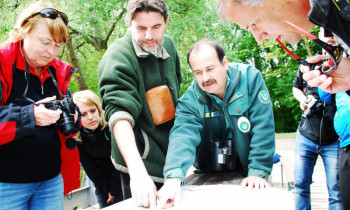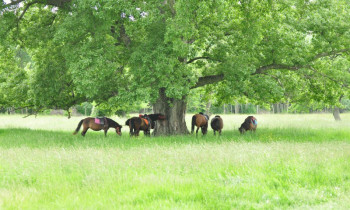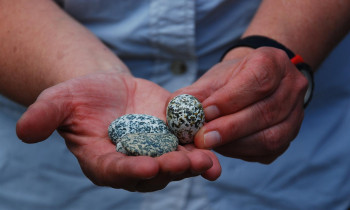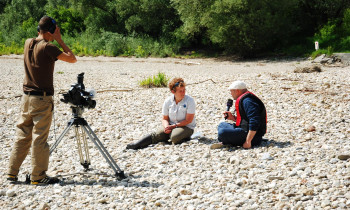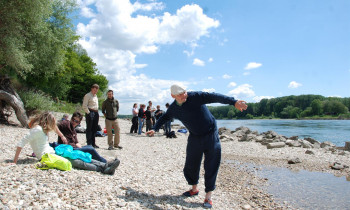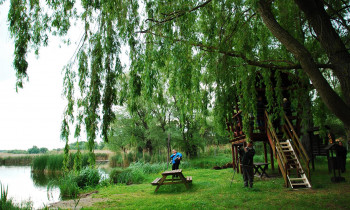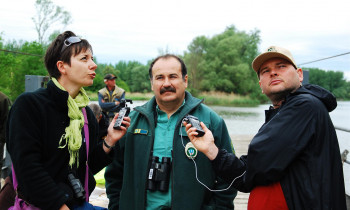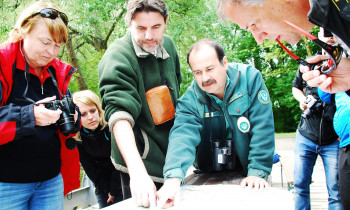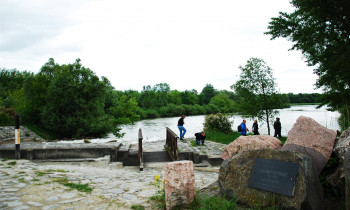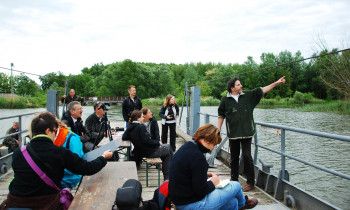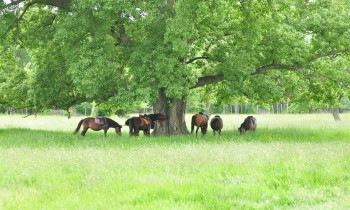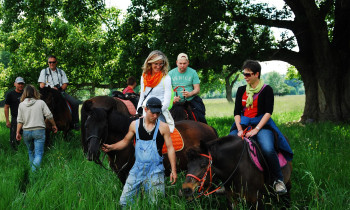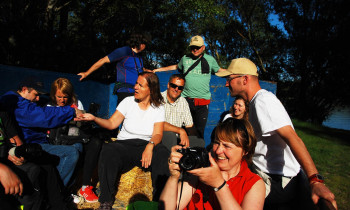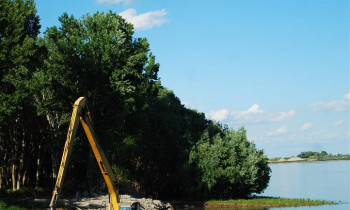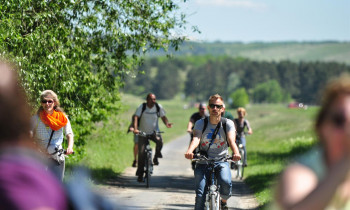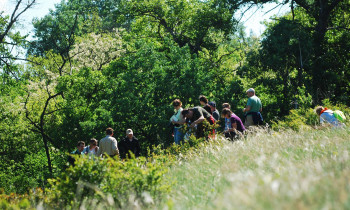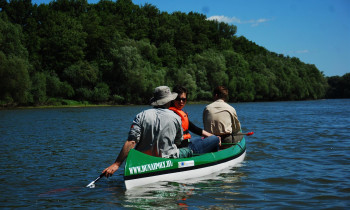Thirteen journalists from Germany, Austria, Slovakia and Hungary visited four Protected Areas to learn more about DANUBEPARKS activities. For once, travelling between Vienna and Budapest had a focus on river branch reconnection, Danube-wide Monitoring activities, and species like Black Poplar, White-tailed Eagle, or Little-ringed Plover.
The journey led through Donau-Auen National Park, Dunajské lúhy Protected Landscape Area, Szigetköz Protected Landscape Area, and Duna-Ipoly National Park. It started at the “Cemetery of the Nameless” in Vienna, travelling further by rubber boat from the city to the wilderness of gravel banks in the Donau-Auen National Park. The conversations there focused on river dynamics, and Little-ringed Plover as well as Black Poplar as indicator species. During a stop at the restoration site Schönau, fake eggs of Little-ringed Plover demonstrated their camouflage impressively.
The next day was dedicated to the Protected Landscape Areas in the border section of Slovakia and Hungary. During a morning bird-watching in Szigetköz PLA, Western Marsh Harrier, Great White Egret and Little Bittern could be observed. A trip by forestry tug through the river branches gave insights into water regime management, fish ladders, and the nature tourism offers of the area. Our host there was Fertö-Hanság National Park, who manages the Protected Area.
Crossing the border and the Danube at lunchtime, the afternoon was spent at the Vel’ky lél island, a part of the Dunajské lúhy area that is managed by BROZ. The chance to discover the area on the back of a horse was used by more than half of the group. Cows and other animals are used there to keep grasslands open and create a mosaic-like landscape, ideal for supporting high biodiversity. Works on the opening of the outflow of the river branch – giving back the dynamics to this sidearm – could be observed when still going on.
As a finish of the journey, the bike and boat tour at Szentendrei Island acquainted our guests with a range of rare habitats, including dry meadows and sand dunes. How the gravel of the Danube’s bed cares for drinking water of large population numbers was explained too. The trip itself was a perfect symbol of the cooperation in the network, as the bike & boat offer was developed jointly with all other partners during the first DANUBEPARKS project.

